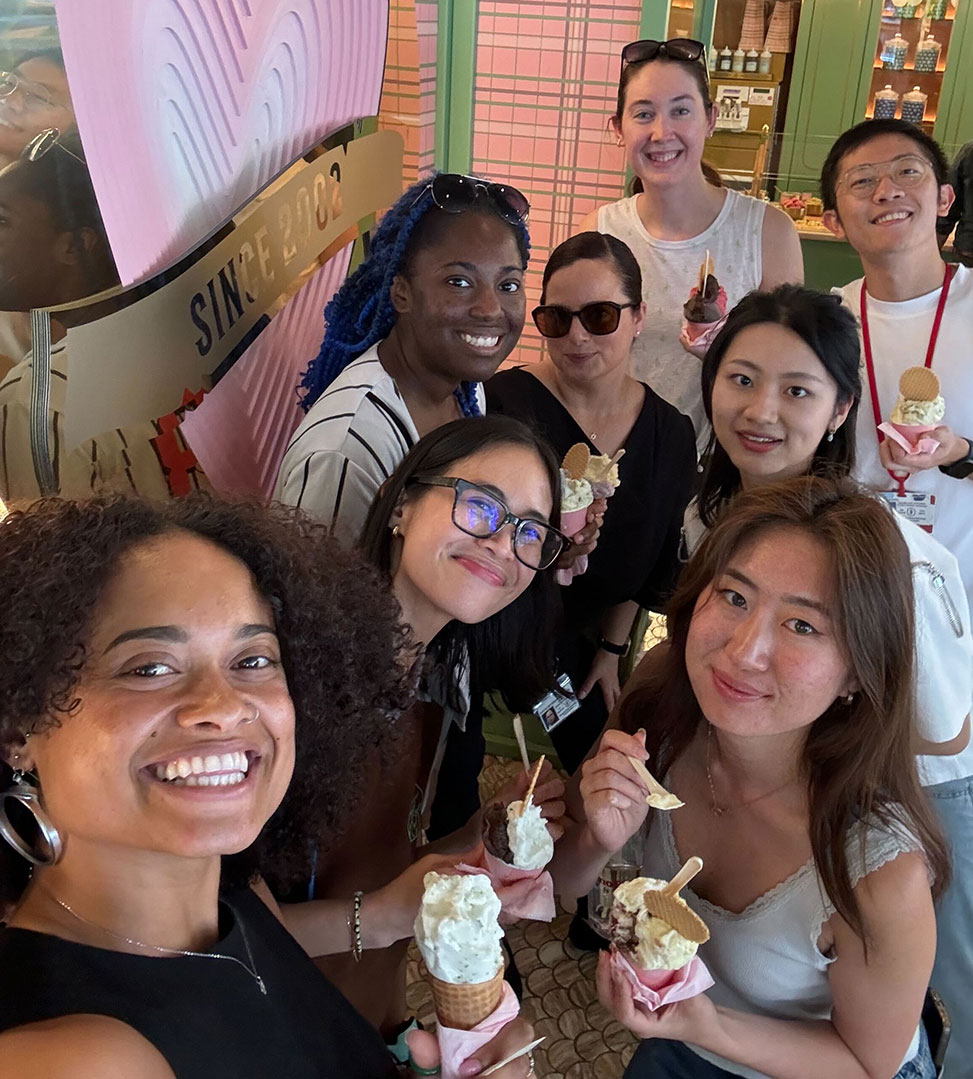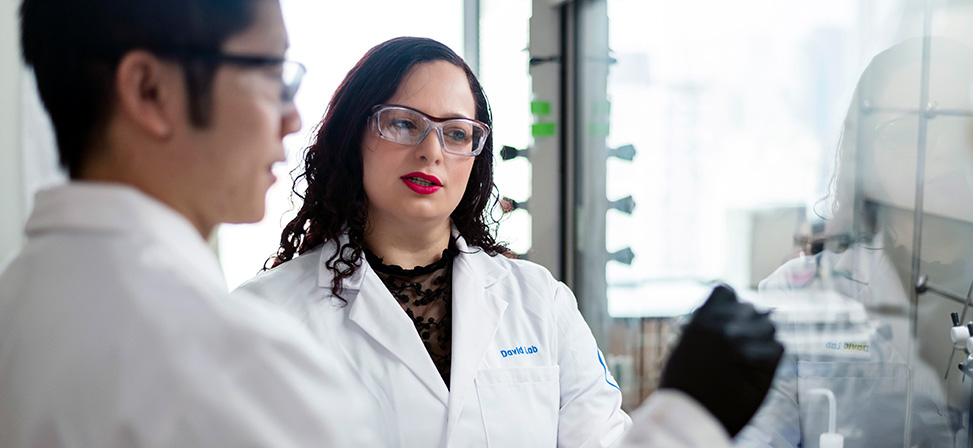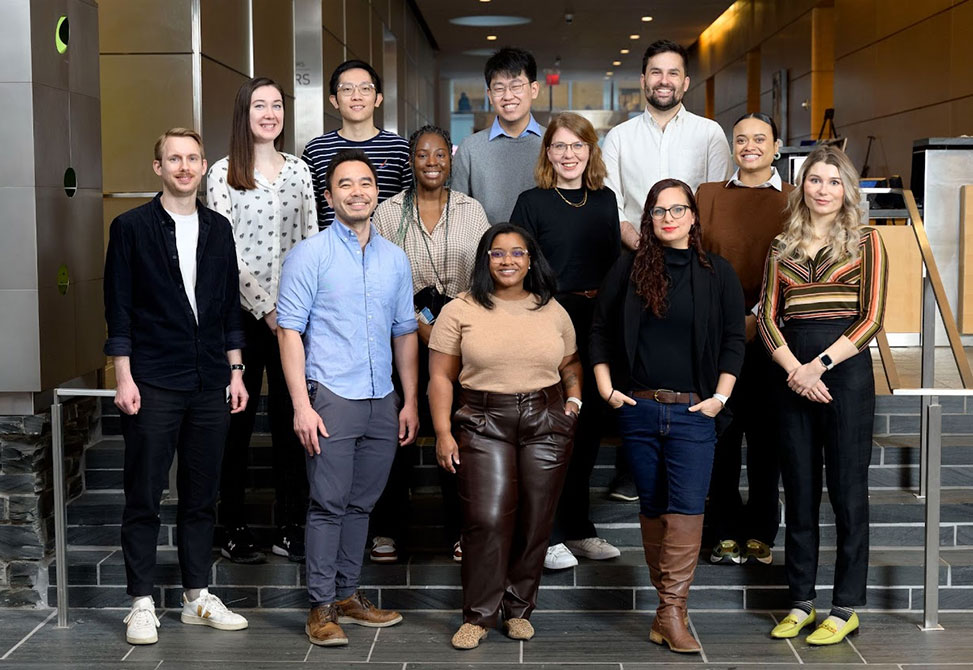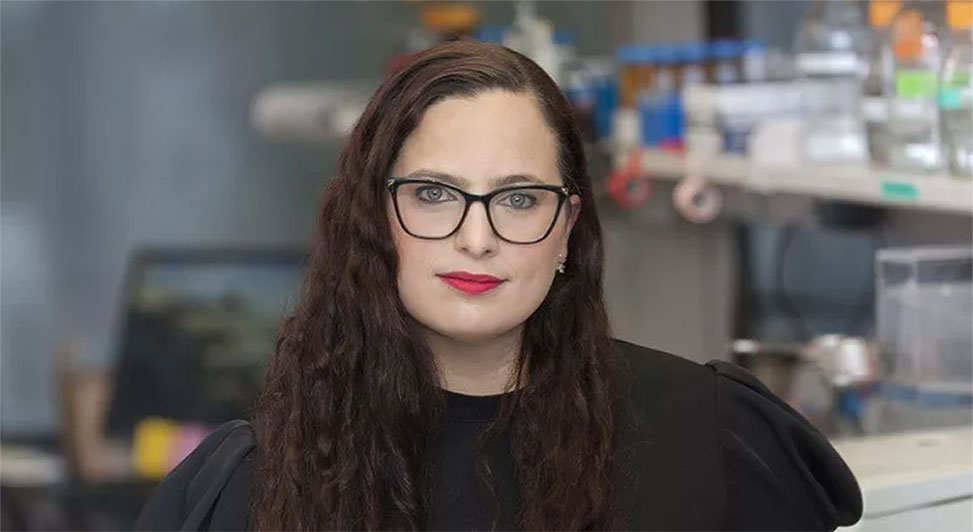Lab of the Month – The Yael David Lab
Life in the Yael David Lab
At the Yael David Lab at Memorial Sloan Kettering Cancer Center, MSKCC, we are passionate about advancing the boundaries of epigenetics research within a supportive, collaborative environment. The research in the David Lab leverages key techniques from chemical biology, biochemistry, and cell biology to explore fundamental aspects of epigenetic regulation through an interdisciplinary approach.

While we continually seek to expand the scope of our research, our projects maintain a strong focus on elucidating the molecular mechanisms that regulate gene expression and their implications for cancer and other diseases. Our work emphasizes the synthesis and application of small molecules and peptides to track, manipulate, and study histone modifications, both in vitro and in vivo. We examine these modifications’ impact in disease contexts, with an ultimate goal of targeting these pathways for therapeutic interventions.
Typically, the David Lab consists of six to eight Ph.D. students and one to three postdoctoral researchers. Located on the 19th floor of the Zuckerman Research Building in the heart of Manhattan, we are adjacent to Weill Cornell Medicine and Rockefeller University, forming part of the Tri-Institutional community. A distinguishing feature of the David Lab is our commitment to interdisciplinary research. “We like to think of our lab as a place where different scientific approaches converge creatively—because interdisciplinarity is where creativity lies,” explains Dr. David.

By uniting expertise from synthetic chemistry, molecular biology, biochemistry, and cell biology, we can address complex biological questions from multiple perspectives. This diversity of approaches keeps our research dynamic and innovative, allowing us to make significant strides in understanding how gene regulation fails in diseases like cancer.
Our Research
Our interdisciplinary approach is reflected in the diverse backgrounds of our lab members. Some are chemists by training, while others hold degrees in molecular biology, pharmacology, or biochemistry. Yet, we all share a deep commitment to using chemical and biological tools to enhance our understanding of disease mechanisms and discover novel therapeutic targets.

Our location at Memorial Sloan Kettering Cancer Center provides us with a unique opportunity to translate scientific discoveries into meaningful clinical impact. As part of a renowned cancer hospital, we are close to the patients who could benefit from our research. This proximity helps us maintain a focus on the clinical relevance of our work, ensuring that our findings hold potential for translating lab research into patient care.
Beyond our scientific pursuits, we are dedicated to fostering a collaborative and positive environment where all lab members can thrive. “I strongly believe that diversity, in every aspect, is essential for driving scientific innovation. I actively seek to recruit and support a diverse team, creating a dynamic and collaborative atmosphere where everyone’s contributions are valued,” says Yael David.

In our lab, we are encouraged to collaborate not only within the lab but also to connect outside of it to promote community wellness and work-life balance. We are committed to supporting each other’s growth, both as scientists and as individuals. Dr. David inspires us to preserve our curiosity, leadership, and mental well-being, enabling us to achieve our fullest potential. And yes, this sometimes means indulging in ice cream outings when the science is challenging and experiments don’t go as planned.
Chemical Biological Tools to Study Epigenetic Regulation
We are dedicated to uncovering how protein modifications, particularly of histones, influence cellular function and fate, contributing to disease development and progression. We develop methods that leverage the precision and flexibility of synthetic chemistry within native chromatin contexts, using, for example, a combination of peptide chemistry and ultra-fast split inteins to generate semi-synthetic proteins both in vitro and in vivo.1,2 Through these approaches, we aim to characterize novel classes of histone modifications and their direct roles in regulating transcription in both healthy and disease states:

1. Exploring Non-Enzymatic Modifications on Histones
We are investigating the role that non-enzymatic covalent modifications (NECMs) play in shaping the epigenetic landscape, determining cellular fate, and influencing disease states. Specifically, we develop and apply chemical probes, peptides, and antibodies to study how sugars and their metabolites modify histones and contribute to epigenetic dysregulation in cancer.3-8
2. Non-Canonical Histone Ubiquitination
Despite the identification of more than 40 ubiquitination sites on histones in vivo, only a fraction of these have been explored in detail. We aim to elucidate the readers, writers, and erasers of these marks to understand their biological significance and functional outcomes.
3. Characterization of Linker Histone H1 Variants
Linker histone H1 is a fundamental chromatin component that plays a crucial role in regulating the higher-order structure of the eukaryotic genome. We have pioneered biochemical methods for purifying H1 variants, allowing us to study their roles in chromatin organization and epigenetic regulation. This research has revealed novel and non-canonical functions of H1 variants.9-12
4. Chromatin (Mis)regulation During Hepatitis B Virus Infection
Hepatitis B Virus (HBV) chronically infects over 300 million people worldwide. Two key elements of the HBV life cycle contribute to chronic infection development and correlate with disease progression severity: the formation of a viral minichromosome of covalently closed circular (ccc) DNA within infected hepatocytes and the expression of the regulatory protein HBx. Notably, HBx in the nucleus redirects host epigenetic machinery to activate cccDNA transcription. We seek to better understand the molecular mechanisms underlying this misregulated chromatin signaling during HBV infection.13
Beyond these projects, we invite you to visit the David Lab website for a comprehensive list of our publications and preprints, as well as an overview of our upcoming work.
Publications
-
Finkin-Groner, E., et al. (2023). Flexible and site-specific manipulation of histones in live animals. bioRxiv, 2023, 03.19.533378.
-
Ray, D. M., Flood, J. R., & David, Y. (2023). Harnessing split-inteins as a tool for the selective modification of surface receptors in live cells. ChemBioChem, 24, e202200487.
-
Zheng, Q., et al. (2019). Reversible histone glycation is associated with disease-related changes in chromatin architecture. Nature Communications, 10, 1289.
-
Ray, D. M., et al. (2022). Chemical labeling and enrichment of histone glyoxal adducts. ACS Chemical Biology, 17, 756-761.
-
Maksimovic, I., et al. (2021). Deglycase-activity oriented screening to identify DJ-1 inhibitors. RSC Medicinal Chemistry, 12, 1232-1238.
-
Maksimovic, I., Zheng, Q., Trujillo, M. N., Galligan, J. J., & David, Y. (2020). An azidoribose probe to track ketoamine adducts in histone ribose glycation. Journal of the American Chemical Society, 142, 9999-10007.
-
Zheng, Q., Maksimovic, I., Upad, A., Guber, D., & David, Y. (2019). Synthesis of an alkynyl methylglyoxal probe to investigate nonenzymatic histone glycation. The Journal of Organic Chemistry, 85, 1691-1697.
-
Zheng, Q., Osunsade, A., & David, Y. (2020). Protein arginine deiminase 4 antagonizes methylglyoxal-induced histone glycation. Nature Communications, 11, 3241.
-
Osunsade, A., et al. (2019). A robust method for the purification and characterization of recombinant human histone H1 variants. Biochemistry, 58, 171-176.
-
Willcockson, M. A., et al. (2021). H1 histones control the epigenetic landscape by local chromatin compaction. Nature, 589, 293-298.
-
Yusufova, N., et al. (2021). Histone H1 loss drives lymphoma by disrupting 3D chromatin architecture. Nature, 589, 299-305.
-
Leicher, R., et al. (2022). Single-stranded nucleic acid binding and coacervation by linker histone H1. Nature Structural & Molecular Biology, 29, 463-471.
-
Prescott, N. A., et al. (2024). A nucleosome switch primes Hepatitis B Virus infection. bioRxiv.
Chemical Biologist Yael David
I have a drive that comes from being trained by a very strong military dad, who was a combat pilot in the Israeli Air Force. He would always tell me, “If you’re the smartest person in the room, you’re in the wrong room.” This attitude kept me moving forward and pushing outside of my comfort zone.
My mom is an educator at heart and a very compassionate person. She taught me to be a good, empathic person and productive member of society. I think that’s why I have this clash in me, of being very driven but also trying to see beyond the destination and paying attention to how I carry myself and how I treat the people who share the journey with me.

When I was 17, my dad was offered a job in New York, right before I was about to join the military. In Israel, military service is mandatory, but more importantly, it was my civic duty, so I stayed and joined the Israeli army. The huge responsibility of my position and living on my own forced me to grow up and become independent very quickly. During my army service, I fell in love with using bits and pieces of information to try and construct a full picture.
Speaking Two Languages
During my professional journey, I have moved between Israel and the United States several times. I started my undergraduate degree at Tel Aviv University. Once my parents settled on Long Island, I stayed with them. Stony Brook University had a fantastic biochemistry and neurobiology program, which was where my interest lay.
The two years I spent at Stony Brook were extremely stimulating. During my first semester, I did hands-on research in the lab of Lonnie Wollmuth. We were studying the structure-function relationship of neuronal receptors. I was fascinated by neurobiology, and through that, I discovered my true passion: how proteins work.
On one of my visits to Israel during these wonderful years, I met my husband, Yaron. He was an academic officer in the midst of his military service and therefore bound to Israel. For that reason, upon graduation from Stony Brook, I moved back to Israel and joined the Weizmann Institute of Science on a direct Ph.D. track. I studied ubiquitin biochemistry under the supervision of Ami Navon. Ami was an incredible mentor and helped harness my passion for science and encouraged me to study biological questions “because curiosity demands.”
Post Graduation
In this productive period, I realized how powerful chemistry is, but also that biologists aren’t taking full advantage of it. After graduation, I accepted a position in the lab of Tom Muir at Princeton University. In Tom’s lab, I dove headfirst into chemical synthesis and learned for the first time how to make molecules. It was a very empowering feeling. But it wasn’t only the technical aspect that was exciting. Tom taught me how to think about biological questions with a chemical resolution and an interdisciplinary toolbox.
After my postdoctoral training, I could not pass up doing science at a top-notch place like MSK, which has a rare combination of high-quality science and the opportunity to do translational research. Now in my own lab, I’m taking everything I learned throughout the years and tackling complex biological questions with powerful chemical tools. Being able to speak both languages, I can build tools and use them to bridge chemistry and biology.
Bringing New Tools to the Study of Epigenetics
My lab undertakes a unique and interdisciplinary approach to a convoluted problem: how cells with an identical DNA blueprint can regulate gene expression to generate the diverse mix of cell types in the human body. We focus on epigenetic mechanisms of gene regulation and try to understand how misregulation of epigenetic events leads to disease states, such as cancer.
We are particularly interested in studying how histone proteins, which spool the genetic material, help regulate its accessibility to the transcription machinery and participate in determining cell fate. We utilize chemical synthesis to manipulate histones in living cells, mimicking epigenetic changes, and examine the direct effect of this manipulation. In fact, we are now going beyond the single cell to perform these manipulations in live animals, which opens exciting avenues in epigenetics research.
Another focus is studying how changes in the cellular environment are reflected on histones. These changes, for example in the metabolic state of a cell, are associated with aging as well as an array of conditions, such as diabetes and cancer. We recently found that these changes can damage histones and affect the integrity of the DNA, which can contribute to cancer.
Perks of the Job
My favorite part about my job is that every day is an adventure. I go to work excited about the people I am going to meet, the scientific challenges I will encounter, the new ideas I am going to brainstorm. I love that my days are packed, but every once in a while, I enjoy just closing my office door, turning on my music, and allowing myself to think, What are some of the interesting things I want to study? Where does “curiosity demands” lead me?
My students sometimes get annoyed with me for having too many ideas. But I always say it’s better to have more ideas than hands, because if it’s the other way around, you’re in trouble.

